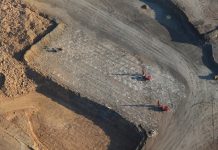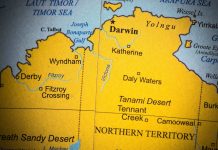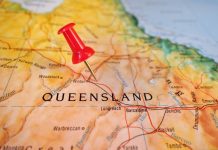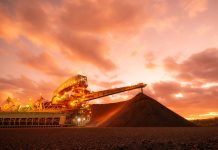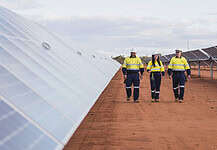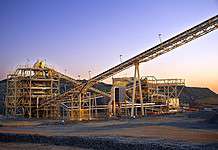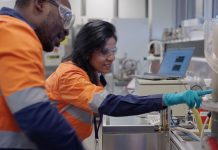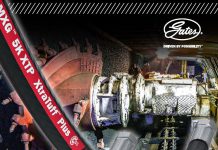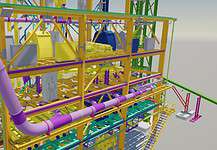By Samantha James
DESPITE a fluctuating price in 2015, Australia’s iron ore sector is remaining competitive within a global market.
Australia’s iron ore industry has been one of the country’s great economic success stories for the past 50 years, growing in revenue to more than $70 billion in 2014 following a jump in prices and subsequent increases in production.
Prices peaked at more than US$190 per tonne in 2011 however proved unsustainable and steadily decreased throughout 2015, to the lowest level in almost a decade at US$43.89/t in late November.

From 2000 to 2014, Australia’s annual iron ore production rose from 170 million tonnes to around 660mt – a compound annual growth rate of 10 per cent.
However, the declining iron ore price in 2015 sparked a furious debate about the role of the Australian Government in creating iron ore price environments.
The debate concerned industry and government policies, and whether policymakers should have acted during the boom to ensure Australia’s iron ore industry would be in a higher priced environment during the downturn.
Several policymakers argued for a cap on iron ore exports and questioned the role major Australian producers had in controlling price movements; Fortescue Metals Group chairman Andrew Forrest called for a government inquiry into iron ore free trade market operations which was ultimately dropped.
The bigger picture approach
In July 2015 the Minerals Council of Australia (MCA) commissioned a report to clarify the state of the iron ore industry in Australia, adopting a “big picture perspective” to shed light on issues being debated.
Port Jackson Partners compiled the Iron Ore: The Bigger Picture report from companies’ annual reports, other market information, reports by industry observers and estimates based on that data.
It stated that Australia’s iron ore industry was expected to contribute more than $600 billion to the economy across the next 10 years, making it a “robust wealth generation machine for the nation, even at long-term average prices or below”.
In considering the role the Australian iron ore industry had to play in the direction of the country’s economy, the report highlighted that the international climate played a considerable role in Australia’s iron ore industry.

“Iron ore trades in a global commodity market which behaves as global commodity markets always do – a sharp increase in demand followed by a rapid increase in commodity prices, an investment driven supply response, and finally price declines as demand slows and costs are taken out across the board,” it stated.
In light of this, the Australian iron ore industry in the past decade had acted “exactly right from a national interest point of view”.
The report stated that as more than 80 per cent of Australian capacity was in the bottom half of the global cost curve it would continue to generate strong operating cash flows even in the face of slowing growth.
In addition, iron ore employment had contributed $45 billion to the economy since 2005 and would add a further $78 billion through to 2025, based on a “very conservative analysis including modest consensus price forecasts and an assumption of no future growth”.
The report concluded that government policy action was likely to be detrimental to industry growth based on historical trends.
“History shows market intervention through government policy action is likely to be ineffective at best and counter-productive at worst,” it stated.
Export controls introduced by the Australian Government in the 1970s led Japan to support Brazilian iron ore investment instead of Australian.
The report suggested that policies should instead focus on allowing all operators to compete successfully in the global market, and to make their businesses sustainable against a range of potential prices.
“These policies are focused on free and open markets for trade internationally, competitive markets for goods and services supplied in Australia, workplace cultures that support productivity, wise investments in people and infrastructure and stable and competitive tax and royalty arrangements,” the report stated.

Getting the facts
MCA deputy chief executive John Kunkel said that Iron Ore: The Bigger Picture was commissioned in the interest of “getting some sensible facts into the debate around movements in the iron ore price”, putting prices in a longer historical perspective and identifying the various players in the global iron ore industry.
“We focused on the way the market works and the sort of policy issues we should be targeting to improve our competitiveness, rather than suggestions that what Australia had to do was impose a cap on iron ore production and that would be to the benefit to Australia,” he said.
“We challenged the idea in the report.
“The core point was that after that pretty remarkable growth decade, we now have a much larger iron ore industry that remains highly competitive on the whole even at much lower prices.
“The key to Australia being able to continue to capture the benefits from the industry is to do what we’ve been doing – which is to be a highly reliable, competitive supplier.”
Mr Kunkel said that although prices fell through 2014 and 2015 quicker than expected, companies had been responding to the market signals from as early as 2012 by revising capital commitments and pulling back expansion plans.
“It’s not as if there is something nefarious going on – companies are responding in a rational way to the market changes, and they have been doing that [since] long before the sharp drop in 2015,” he said.
Mr Kunkel said that a campaign that suggested the major iron ore producers were “taking an approach to their business that was contrary to Australia’s national interest” which was being reflected in the sharp fall in the iron ore price “was a pretty simplistic point of view”, and that if governments intervened history had shown it would “end in tears”.
“The idea of intervening in the market is a dangerous one from a long-term perspective,” he said.
“If you want to say that governments should intervene in the market then you have a pretty high burden of proof to say that you’re going to make better decisions than companies making their own decisions.

“[The report highlighted] the importance of free and open markets from a long term perspective and the need to address the core issues of competitiveness and productivity, rather than a more arbitrary approach of attacking particular companies because they’re somehow acting against the national interest,” he said.
Market factors
Mr Kunkel said that the “big picture” in commodity markets was supply and demand – iron ore prices were influenced by factors that ultimately dictated supply and demand, such as geology, governments and national policies, and most of these factors were outside of company’s hands.
“Markets are not perfect but they’re the best mechanism we have to channel all the information that’s out there,” he said.
“Not just today’s supply and demand, but expectations for supply and demand in the future – and that’s the challenge for commodity markets as they’re dealing with today as well as expectations for the short, near and long-term future.”
Mr Kunkel said BHP Billiton and Rio Tinto’s long standing status as major producers and their role in the creation of the modern iron ore industry meant that they were better leveraged for reducing costs, with long-term suppliers and investors showing support for recent cutbacks.
In comparison, newer players such as Fortescue had to deal with higher cost structures; even so, Mr Kunkel said the market in general – including Fortescue, which had ramped up its production to 165 million tonnes per annum since 2013 and slashed production costs by 47 per cent in the September 2015 quarter – adjusted well to these hikes.

“The scale of the price increase in recent years inevitably brought new players to the market; the nature of that being those new players had, in a lot of cases, higher cost structures, so clearly when the price falls significantly those players come under more pressure,” Mr Kunkel said.
“The market tends to adjust quite well to these things. BHP and Rio have been quite successful in reducing costs over the past few years, but so has Andrew Forrest, and ultimately that’s part of the reaction to the market place.
“I think that’s the way these things play out – ultimately it will be the competitiveness of individual companies that will govern how markets evolve.
“Getting politicians to become a lightning rod for particular sets of demands I don’t think is very helpful from a long term point of view.”

